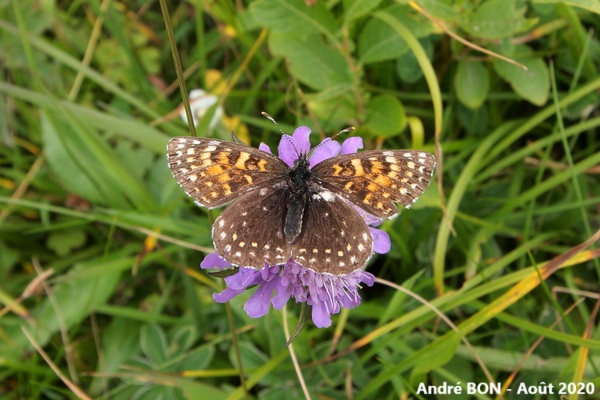
| False Heath Fritillary (Melitaea diamina (Lang, 1789)) |

|
|
Scientific name: Melitaea diamina (Lang, 1789) Common name: False Heath Fritillary French name: Mélitée noirâtre, Damier noir. Order: Lepidoptera Suborder: Rhopalocera Family: Nymphalidae Subfamily: Nymphalinae Wingspan: 36-42 mm. Females are larger than males. Biotope: Shaded wet meadows, floodplain meadows, stream and peat bog edges, forest edges. Geographic area: Western Europe from northern Spain to southern Scandinavia, Central and Eastern Europe, temperate Asia east to southern Siberia, Korea and Japan. Flight time: May to October. Number of generations : 2 (1 at altitude). Caterpillar: Grey-black with numerous small white dots and yellow-orange spines with white tips. Host plant: Valerians (Valeriana spp.) |
The False Heath Fritillary has a yellowish-brown to blackish-brown upperside, marked with rows of tawny postdiscal and submarginal spots on the forewings and becoming more yellowish-white on the hindwings. The upperside of the hindwings is usually very dark but this characteristic depends on the subspecies. The underside of the hindwing has an orange submarginal band marked with black dots and a yellowish to orange marginal line, darker than the crescents next to it. |
| [To know more about the False Heath Fritillary] [Top] |

|
The rows of postdiscal and submarginal spots and the blackish hindwings are the criteria I used to identify the False Heath Fritillary. I would have liked to have a view of the underside but it was not possible. |